how to install a two handle kitchen faucet
10 Tips for Installing a Faucet the Easy Way
Today's faucets are easier than ever to install. In fact, you can even buy faucets that install entirely from the top of the sink so you don't have to crawl underneath. But there are still things you should know for a quick, easy and leak-free installation. Here are our best tips for helping you with your next faucet installation.
1 / 10
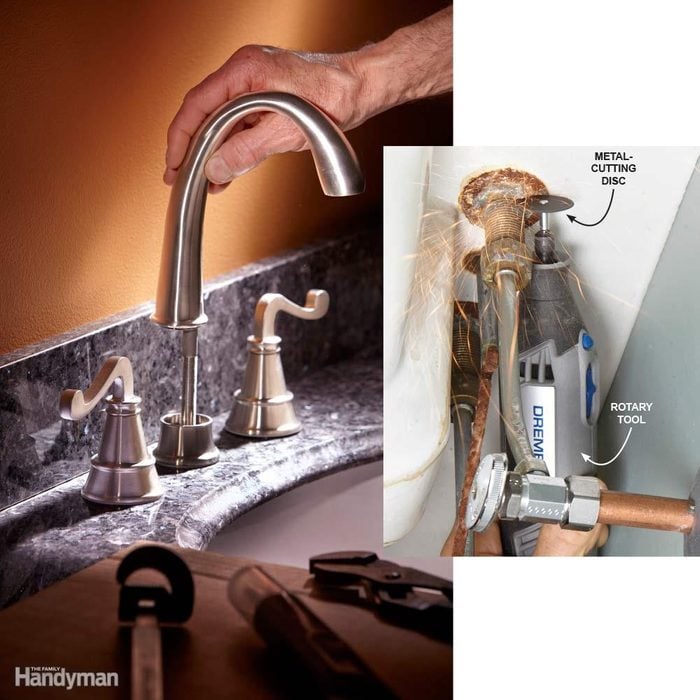 Family Handyman
Family Handyman
Cut Out the Old Faucet
Even with a basin wrench, it can be nearly impossible to break loose corroded nuts holding older faucets to the sink. If you don't care about wrecking the faucet, cut off the nuts instead. You can use either a rotary tool (Dremel is one brand) with a metal-cutting disc or an oscillating tool with a metal-cutting blade. Cut through one side of the nut. Then use a screwdriver to pry the nut away from the faucet body. You can also cut off other stubborn parts, like the pop-up drain assembly on a bathroom sink.
2 / 10
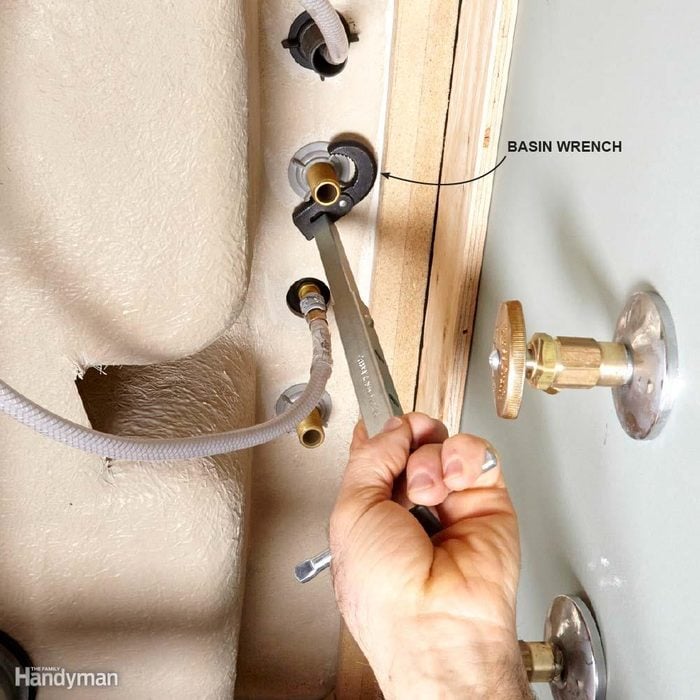 Family Handyman
Family Handyman
You May Need a Basin Wrench
A basin wrench is a standard plumbing tool that is indispensable for removing and installing most faucets. The wrench allows you to reach into the cramped area behind the sink to loosen or tighten the nuts that hold the faucet to the sink, and the nuts that connect the supply lines. You may not need a basin wrench if you can get the old faucet out by cutting the nuts or if the new faucet includes a wrench or some other means of installing the faucet without a basin wrench. Check inside the package when you buy the faucet to see what's required. If you do need a basin wrench, you can find one at a hardware store or home center.
3 / 10
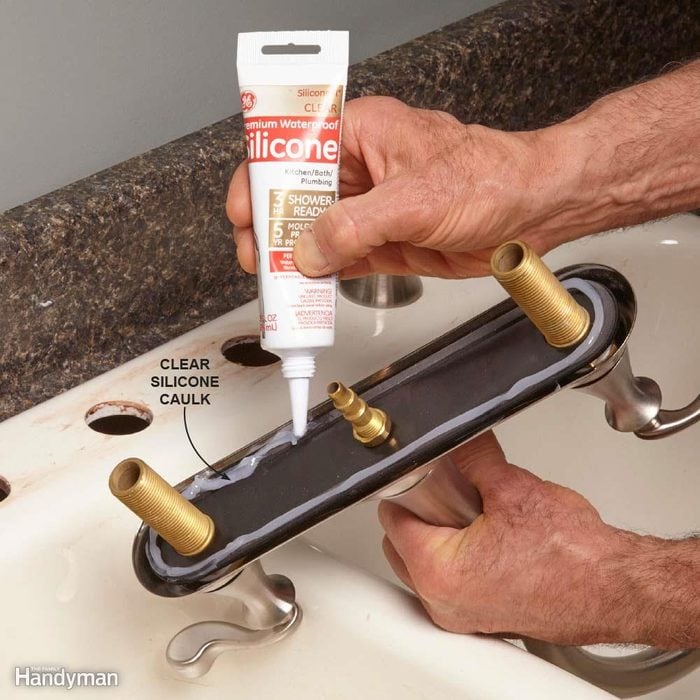 Family Handyman
Family Handyman
Mount the Faucet With Silicone
If water gets under your faucet, it can corrode the faucet or worse, damage your countertop or cabinet. Most new faucets include a gasket of some type to create a seal between the faucet and the sink, but it's still a good idea to apply a bead of clear silicone caulk to the bottom of the faucet and the bottom of the gasket to ensure a good seal. Also, the silicone acts as an adhesive to prevent the faucet from moving around if the connection nuts loosen. Clean up any silicone that oozes out, first using just a paper towel, then mineral spirits.
4 / 10
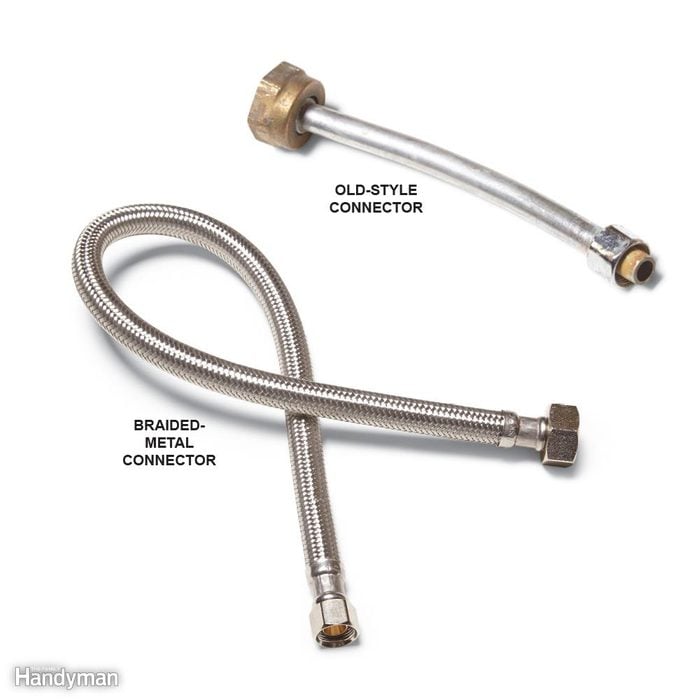 Family Handyman
Family Handyman
Upgrade Your Supply Lines
One of the most difficult parts of installing a new faucet used to be connecting the supply lines so they didn't leak. But the new-style connectors with braided jackets have gaskets built into each end that make connections virtually foolproof. They cost more than the old-style connectors, but are worth every penny. You don't need to crank the nut very tight for an effective seal. Just thread it finger-tight and then add about a half-turn with a wrench. So save yourself headaches and replace those old supply lines with braided stainless steel connectors.
5 / 10
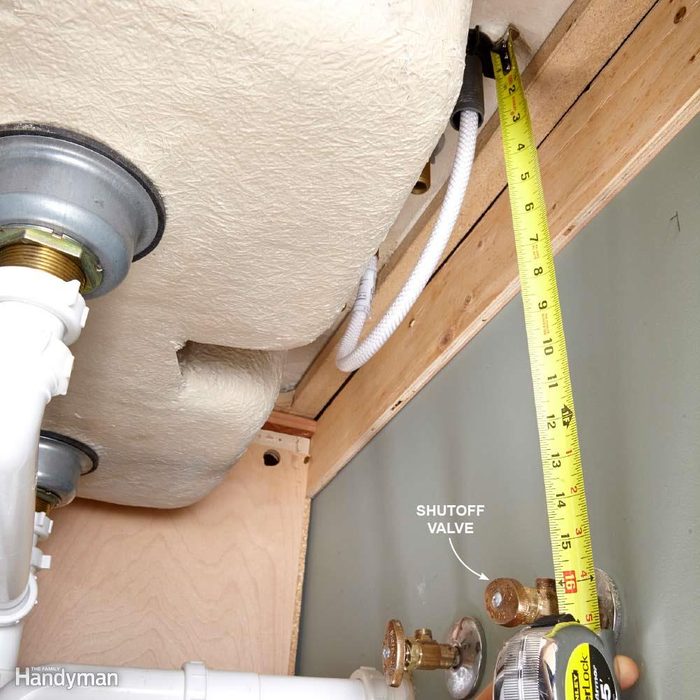 Family Handyman
Family Handyman
Measure for the Supply Line
Many new faucets include supply lines, but they may not be long enough, or they may not have the right threads to connect to your shutoff valves. To determine the length of the supply lines you'll need, measure from the underside of the sink near where the faucet connects to the shutoff valve and add a few inches. If the supply lines included with your new faucet aren't long enough, buy extensions. To make sure the threads on your new supply lines match those on your shutoff valves, take one of your old supply lines with you to the store and match it with the new supply lines.
6 / 10
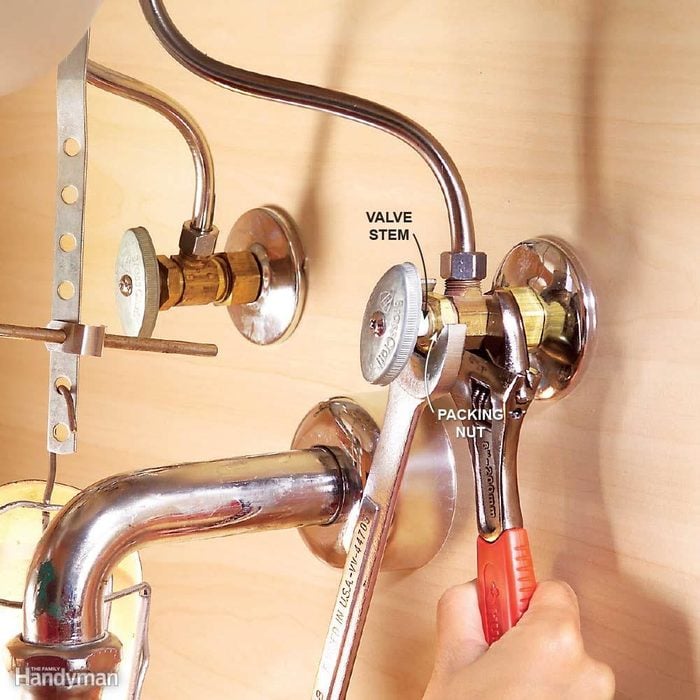 Family Handyman
Family Handyman
Stuck Shutoff Valves
If your shutoff valve is stuck open, you can often free it by loosening the packing nut slightly. This relieves pressure on the valve stem and allows you to turn the valve more easily. Retighten the valve stem nut just enough to prevent leaks around the valve stem.
7 / 10
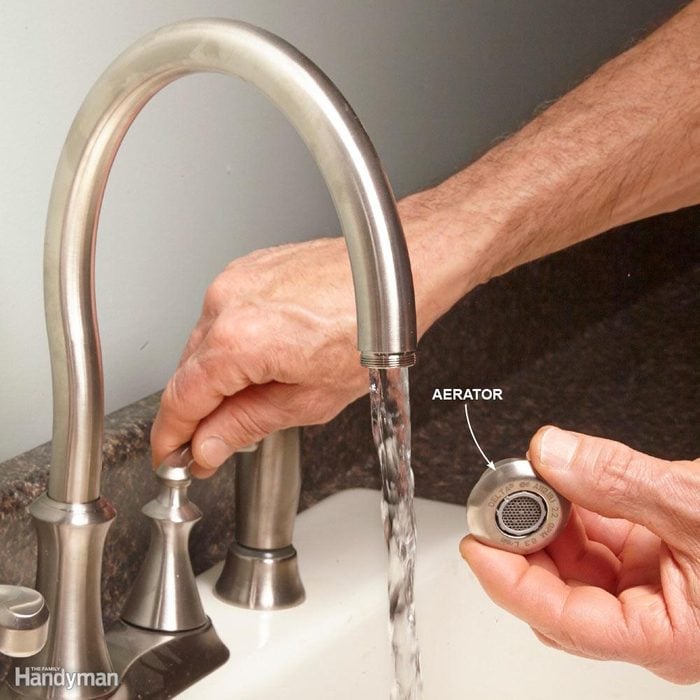 Family Handyman
Family Handyman
Remove the Aerator Before You Turn on the Water
Messing around with plumbing often dislodges minerals or other debris that has built up inside the pipes and valves. To prevent that stuff from clogging the aerator in your new faucet, remove the aerator before turning the water back on. The aerator is the device on the end of your faucet that has a screen or perforated plastic covering the end. Most aerators simply unscrew counterclockwise. Some new faucets include a special tool for removing the aerator.
If you're installing a pullout faucet, the aerator can be tricky to remove. If this is the case, simply unscrew the entire spray head from the supply tube and point the tube into the sink while you turn on the water. Let the water run a few seconds. Then replace the aerator or spray head. If your faucet ever starts to run slowly, remove the aerator and clean it. This will usually fix the problem.
8 / 10
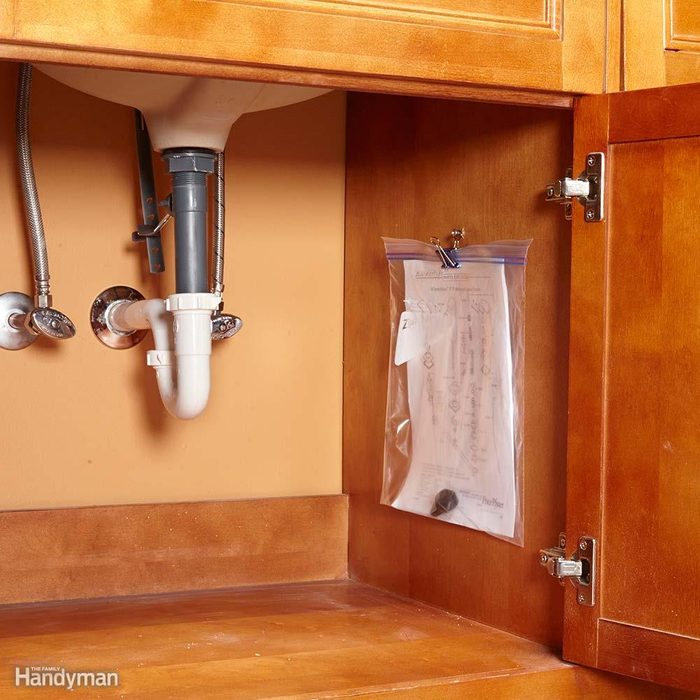 Family Handyman
Family Handyman
Save the Instructions and Parts in a Freezer Bag
Many new faucets include wrenches, aerator removal tools, and other parts or tools that you should keep. An easy way to keep track of this stuff, along with the instruction sheet, is to put it all in a big freezer bag and hang it inside the sink cabinet, where you'll always be able to find it.
9 / 10
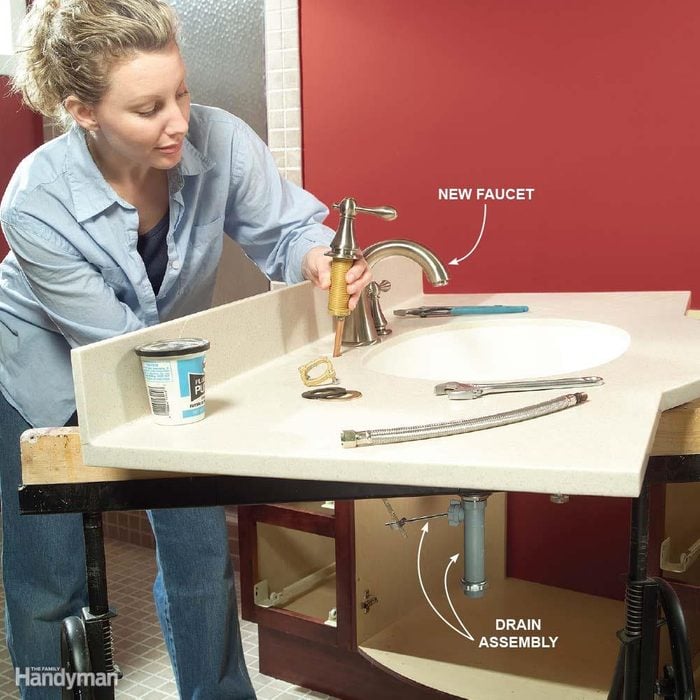 Family Handyman
Family Handyman
Premount the Faucet on New Sink Installations
If you're installing a new sink along with your faucet, mount the faucet to the sink before you install the sink. It's much simpler than lying on your back inside the sink cabinet to install the faucet. Even if you're not installing a new sink, you may find it easier to remove the old sink to get better access for removing the old faucet and installing the new one. Plus, removing and reinstalling the old sink will allow you to clean off old caulk and gunk that's accumulated around the edge and renew the seal between the counter and the sink with fresh caulk.
10 / 10
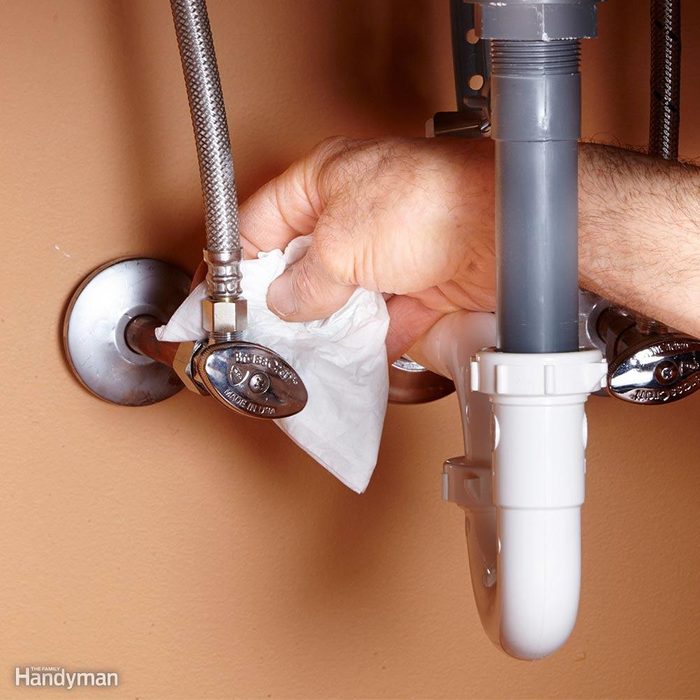 Family Handyman
Family Handyman
Checks for Leaks
When you're done with the faucet installation, check for leaks. Turn on the water and let it run for two or three minutes. Then crawl under the sink with some tissue and wipe around the joints with it. Even a tiny leak will show up as a wet spot on the tissue. Tighten the connection near any leak you find.
Originally Published: November 20, 2019
Sign up for DIY projects sent right to your inbox
Complete DIY projects like a pro! Sign up for our newsletter!

Subscribe & SAVE 1 Year Subscription
for only $10!
how to install a two handle kitchen faucet
Source: https://www.familyhandyman.com/list/tips-for-installing-a-faucet-the-easy-way/
Posted by: cotetion1988.blogspot.com

0 Response to "how to install a two handle kitchen faucet"
Post a Comment